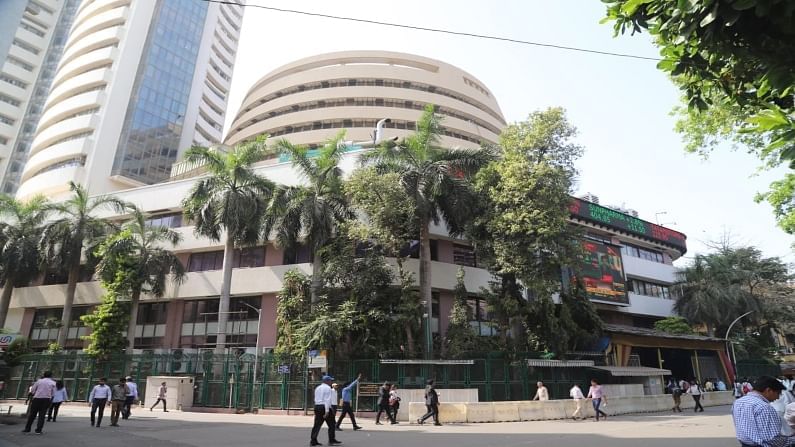9 reasons why it's a good time to book profits in market
Rich valuations, a high probability of earnings disappointment, and a potential lack of marginal buyers are key reasons to book profits.

A slew of global brokerage firm UBS, Nomura, Morgan Stanley and Goldman Sachs over the past one month and the latest one to join the club is CLSA. Calling time on the 20-month rally in Indian equities during which the Nifty and the Sensex have more than doubled from the pandemic lows, the brokerage has lowered exposure to India within its Asia Pacific ex-Japan portfolio to 40% underweight.
“Concerns range from elevated energy and broader input price pressures applying downward pressure to margins, the current account balance and thus currency outlook, the withdrawal of RBI stimulus, and a lack of upside implied by Indian equities’ typical macro drivers. Rich valuations, a high probability of earnings disappointment, and a potential lack of marginal buyers add to our motivation to book profits on India,” stated a report released by CLSA.
High energy prices
India’s underperformance is associated with high energy prices. Oil, gas, and coal accounting for 29%, 7%, and 55% of the country’s primary energy needs, respectively. Thus, acutely high energy prices (as defined by the average of the real oil and real coal price in excess of US$100 in 2016 dollars) are typically consistent with the erosion of India’s external position, sustained episodes of Rupee weakness, and ultimately Indian equities’ underperformance of regional equities.
Soaring input costs
CLSA sees evidence of corporates struggling to pass swiftly rising input costs related to global energy price appreciation and pandemic-induced supply chain disruption on to end customers. The brokerage is of the opinion that it heralds the start of margin compression for India with important implications for the country’s relative profitability dynamics and, thus, relative asset-based multiples versus broader emerging markets.
Withdrawal of stimulus programme
On 8 October, RBI Governor Shaktikanta Das announced the suspension of the central bank’s Government Securities Acquisition Programme (quantitative easing) while maintaining the benchmark repo rate at 4%.
CLSA economics team forecasts, Indian inflation will fade towards the RBI’s 4% medium-term target by end-FY2024 (March) from an uptick to 6.2% in March 2022, while they anticipate the first interest rate hike in April 2022 for a cumulative 50 basis points of tightening by March 2023.
Macro drivers suggest no upside
Four-fifths of MSCI India’s monthly US dollar price returns over the past two decades may be explained by the combination of monthly movements in India’s industrial production, M3 money supply, rupee exchange rate versus the US dollar and the headline US ISM survey. “Currently, this framework suggests a significant disconnect between the index level change warranted by momentum in these underlying variables and the actual index level to the tune of MSCI India appearing some 23% overbought,” noted the report.
Absence of fresh marginal buyers
According to CLSA in the 12 months from April 2020 through end-March 2021, net purchases of Indian equities by non-resident investors surged by US$38.4bn versus a cumulative US$8.7bn recorded in the five previous years. The demand for Indian equities has been primarily domestically driven this year, the pace of these purchases has also more recently begun to wane.
Furthermore, with the equity allocation on average among Indian domestic mutual funds already the highest among emerging market peers and the earnings yield to bond yield ratio at just 0.7x being the lowest since May 2008 leaving a questionable incentive for an extended episode of the current domestic equity euphoria.
Relative valuations are richer
Trading on a 31.6x cyclically adjusted P/E, India is currently at the most expensive earnings-based valuation since June 2008 at more than one standard deviation above its 18-year average of 22.6x. This contrasts with overall emerging markets trading on less than half India’s multiple at 14.7x, or cheap to its respective 24-year average of 16.6x.
Pressure on rupee
CLSA economics team forecasts, India’s basic balance of payments position will move back into deficit from March 2023 onwards with a March 2024 estimate of -0.8% of GDP (current account deficit of 2.5% of GDP and net foreign FDI inflows at 1.7% of GDP). CLSA is projecting a commensurate weakening in USDINR to 78.5 by March 2023 as the Federal Reserve leads the way on the removal of ultra-stimulative monetary policy.
Limited credit growth
Besides pressure on the rupee, CLSA forecasts loan growth in India to remain at or below the pace of nominal GDP for the medium-term as undercapitalised PSU banks continue to constrain Indian economic output as they struggle to meet the demand for credit extension.
Inferior value creation
CLSA notes that historically, sustained episodes of India’s equity outperformance of emerging markets have typically occurred with a backdrop of superior value creation (spread of ROE over COE) for India relative to the overall EM asset class. However, India’s value creation at 645 basis points is now 232 basis points inferior to that of the emerging market.